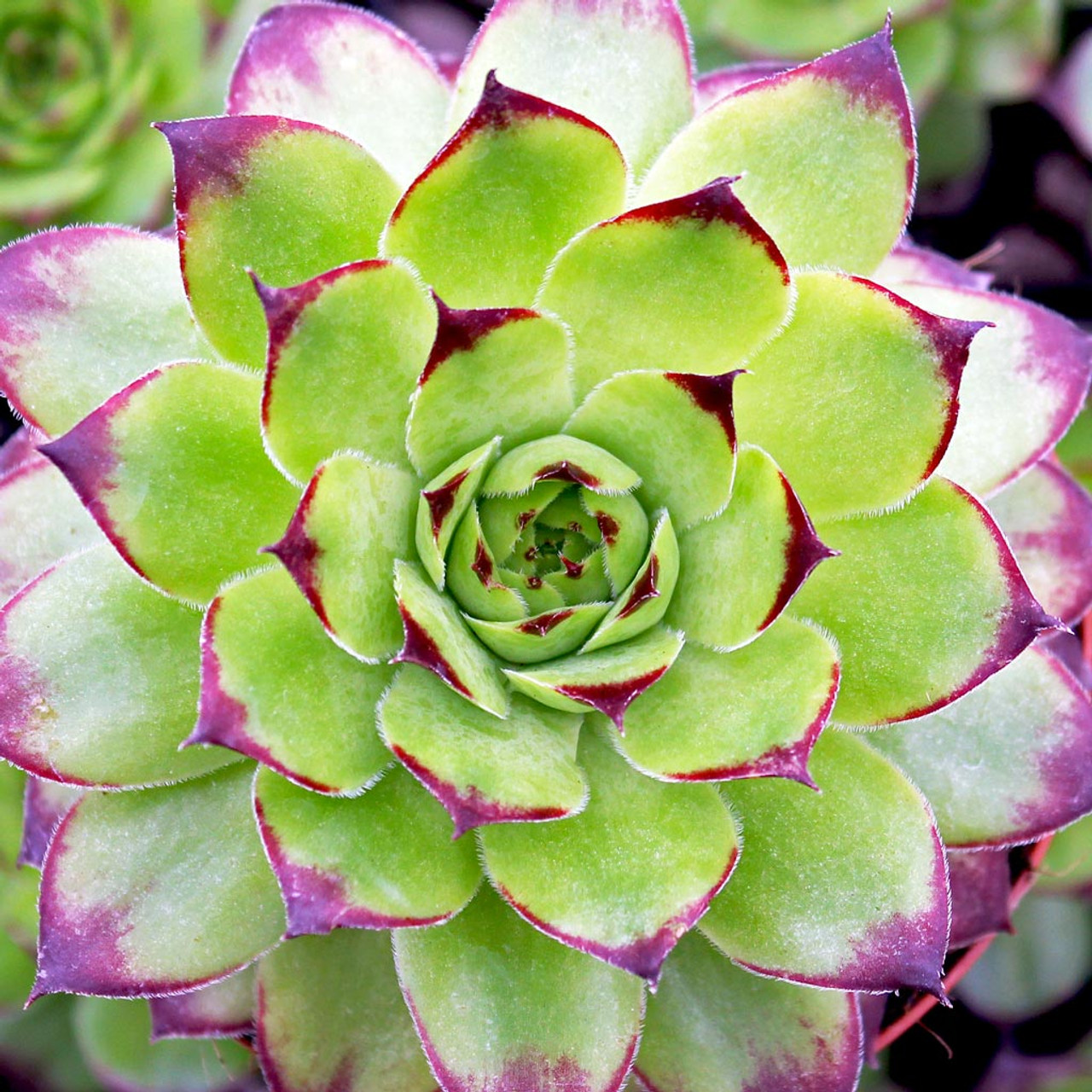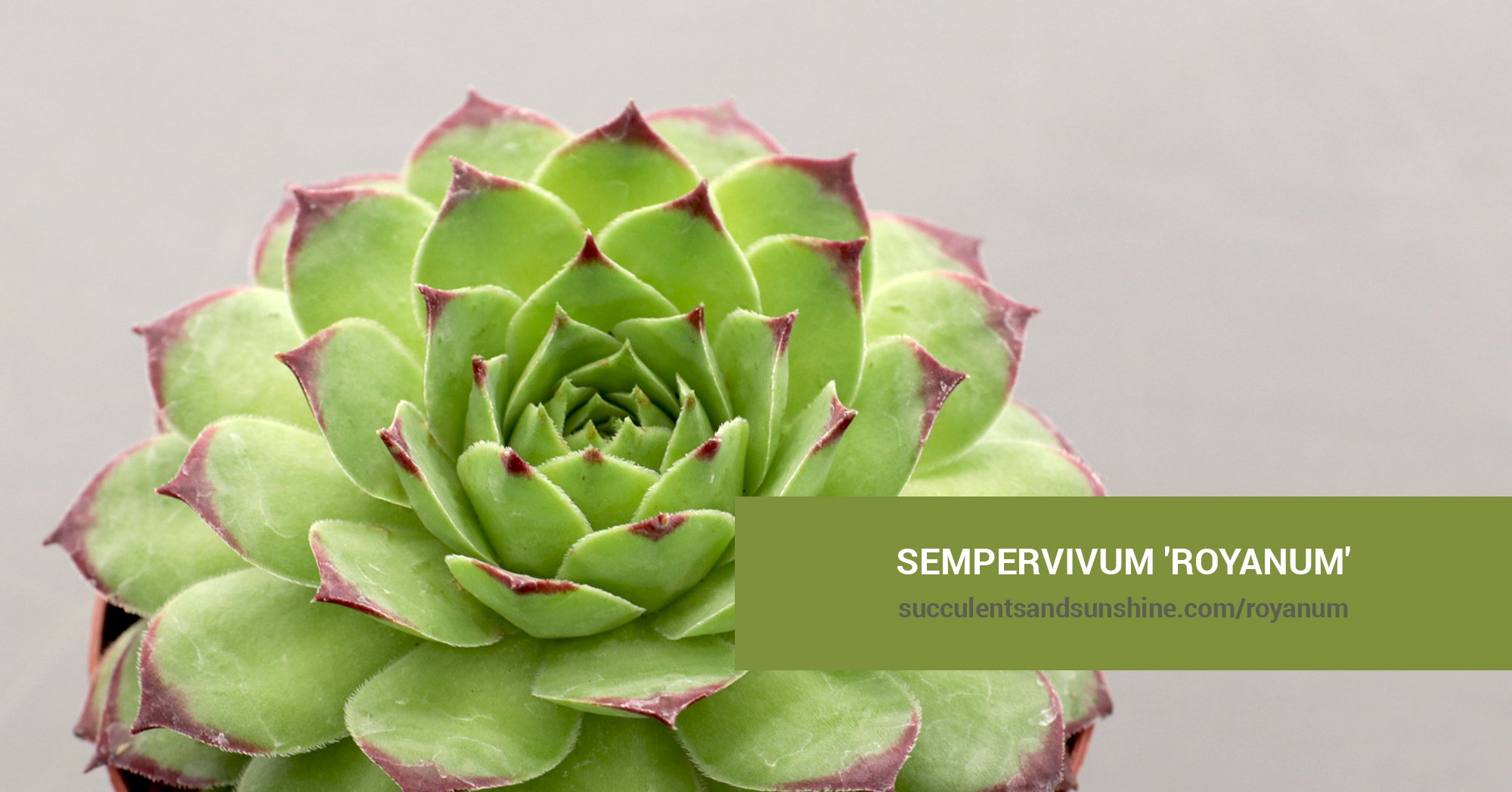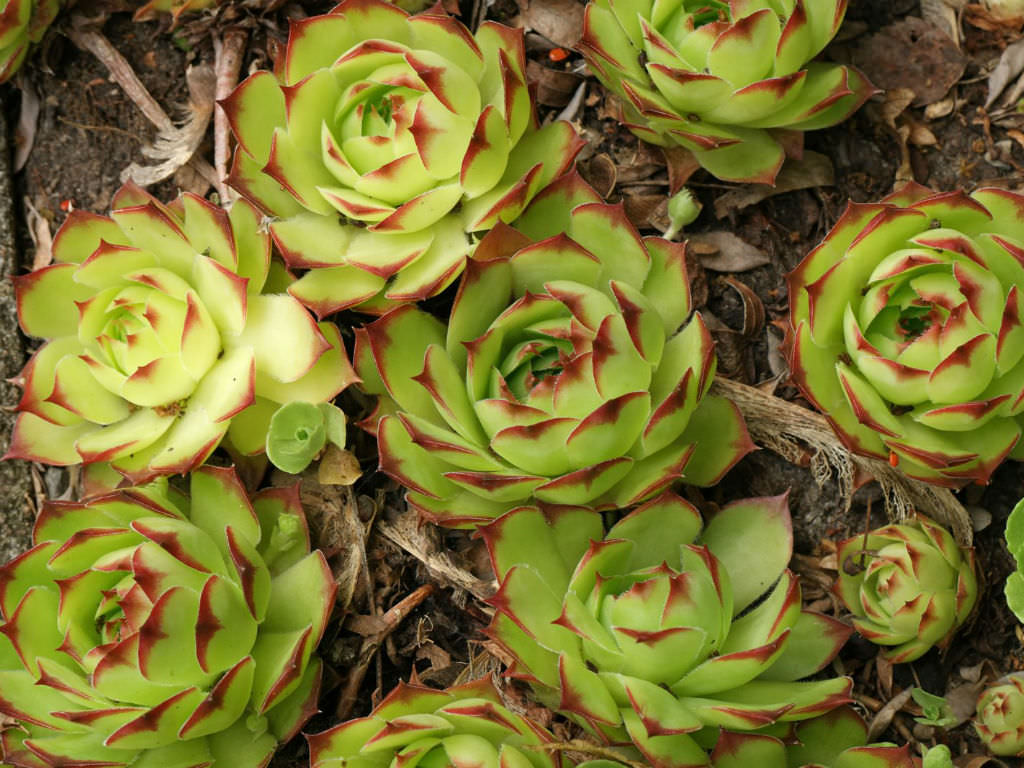This hardy succulent has a green base with purple tips, making it an ideal choice for those just starting out in gardening. It is monocarpic, meaning it flowers only once before dying.
Table of Contents
Care and Propagation Information
Royanum is ideal for gardeners who cultivate succulents in outdoor settings and can withstand the cold temperatures. It is great for rock and pot gardens.
Watering
Royanum has the usual requirements for a succulent when it comes to watering. The best approach is to use the “soak and dry” technique, and make sure the soil has a chance to dry out completely in between waterings.
Where to Plant
Sempervivum ‘Royanum’ can tolerate frigid winter temperatures and should be planted in an area of the garden that receives 6 hours of sunlight per day in order to thrive. It enjoys partial to full sun exposure.
How to Propagate Sempervivum ‘Royanum’
This succulent, Sempervivum ‘Royanum’, is an ideal choice for gardeners who wish to add a hardy succulent to their outdoors. It can be propagated from its offsets (chicks), and is known to survive in colder climates.
Offsets
Cut the offsets of Royanum from the main stem with a clean and sharp knife or scissors. Let them sit for one to two days prior to placing them on top of soil that has good drainage.
Seeds
When cultivating ‘Royanum’ from seed, it is important to create a warm environment, either by using a seed warmer and grow light or by making sure the temperature is suitable. Plant the seeds in soil that drains well and water it whenever the soil feels dry. It can take several weeks or longer for the seeds to germinate, depending on the conditions you are cultivating in.
Care and Propagation Information
General Care for Sempervivum ‘Royanum’
Watering
Royanum has the usual requirements for a succulent when it comes to watering. The best approach is to use the “soak and dry” technique, and make sure the soil has a chance to dry out completely in between waterings.
Where to Plant
Sempervivum ‘Royanum’ can tolerate frigid winter temperatures and should be planted in an area of the garden that receives 6 hours of sunlight per day in order to thrive. It enjoys partial to full sun exposure.
How to Propagate Sempervivum ‘Royanum’
This succulent, Sempervivum ‘Royanum’, is an ideal choice for gardeners who wish to add a hardy succulent to their outdoors. It can be propagated from its offsets (chicks), and is known to survive in colder climates.
Offsets
Cut the offsets of Royanum from the main stem with a clean and sharp knife or scissors. Let them sit for one to two days prior to placing them on top of soil that has good drainage.
Seeds
When cultivating ‘Royanum’ from seed, it is important to create a warm environment, either by using a seed warmer and grow light or by making sure the temperature is suitable. Plant the seeds in soil that drains well and water it whenever the soil feels dry. It can take several weeks or longer for the seeds to germinate, depending on the conditions you are cultivating in.
FAQ
How do you care for Royanum succulents?
Royanum has the typical watering requirements of a succulent. The best way to water it is to use the “soak and dry” method, which involves allowing the soil to dry out completely between waterings.
Do you cut back Sempervivum?
Sempervivum species do not need to be pruned, but it is recommended to remove any wilted flower spikes and carefully get rid of any dried, damaged, or dead leaves.
How do you maintain Sempervivum?
Sempervivum plants require minimal amounts of water, similar to other succulents. It is important to avoid keeping the soil overly wet, which can lead to root rot. Water sparingly, only when the soil is dry. As is the case with most succulents, a single deep watering is preferable to frequent, light waterings.
How long does a Sempervivum last?
How do you care for Sempervivum Royanum?
Sempervivum benefit from regular watering and some shade during hot summer days when temperatures are above 80F. They are very tolerant of cold weather and can survive through winter when provided with an added layer of insulation from snow. Make sure to keep them away from heavy rain or standing water to prevent rotting.



